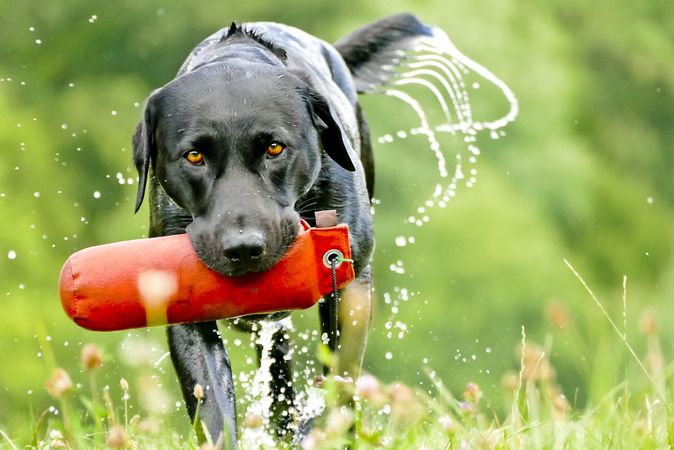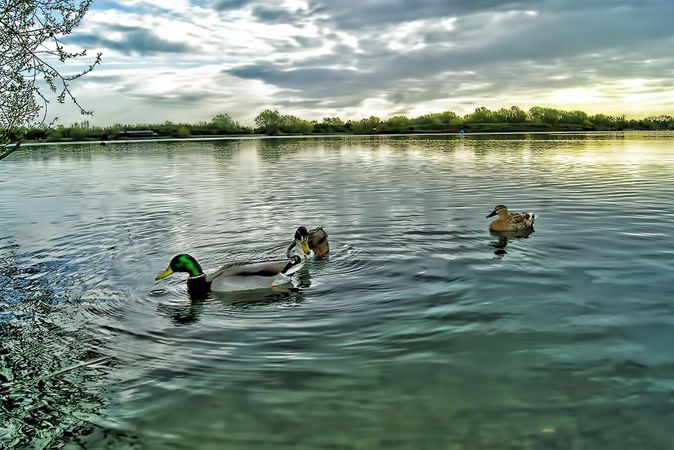Training a dog can be tough, but there’s no greater reward than seeing your pup excel in the field. If you’d like to tackle the task yourself, by all means, go for it. We’ve trained dogs ourselves and had others sent off to a trainer, and they all have performed well. Here’s a few hunting dog training tips to build a solid foundation for your pup. With these basics, your dog will begin to shape into a capable waterfowl retriever.
The Basics
A few basics your pup will need to know are the following commands: sit, come, stay and heel. It’s best to begin when the dog is around 13 weeks old. Start with “sit,” perhaps the easiest for a dog to master. Get on the floor next to him and hold a treat near his nose, then slowly move it up his head. As you hover the treat, his rear end will lower and eventually touch the floor. When it does say “sit,” and give him the treat and much praise (say “good”). Repeat until he sits on command without a treat.
Sit is an easy first command for you and the pup to master.
It’s important for Fido to come when called. This will be crucial in the duck blind, with distractions galore in the form of decoys, critters to chase and what he may deem a large swimming hole. Connect a leash to his collar and follow him around your backyard. Once he’s used to the leash, walk backward and encourage him to follow. If he does, reward him with a treat followed by praise. Eventually start to say “come” as he nears, but don’t get in the habit of repeating the phrase. If he doesn’t come on the first command, walk to him and guide him to where you want him to be. It should be noted to never call a dog for discipline. He should associate “come” with positivity and praise, not something negative.
“Stay” is another important command a dog must master before heading afield. When those mallards are cupped up and headed straight toward your blind, stillness is paramount. Start by attaching the dog’s leash and have him sit beside you. Hold your hand up to his muzzle and say “stay,” then step in front of him, and after a few seconds move back beside him. If he doesn’t move, reward him with praise and a treat. If he moves the first few times, and he likely will, set him back in position and repeat the routine. After he has mastered stay, teach him to release with another command, like “okay.”
The heel command is important to get your dog to walk next to you and at your pace. A dog should stop and walk when you do. This is a skill that can only be taught after your pup has mastered sit, stay and come. Attach a leash to your dog and have him sit next to you. Walk slowly and say “heel.” If you need, guide him along with a treat in front of his face. As he walks next to you, reward with a treat and say “good.” If your dog pulls ahead or loses focus, have him sit and start the process again.
Field Training
Once your dog has mastered the basics, you can introduce him to other commands and immerse him in settings he will encounter in the field. If you use a boat to hunt waterfowl, introduce your pup to it early. Place him in the boat and let him get comfortable there. If you’ve got a lightweight jon boat, place it on the ground and direct your dog in and out of it several times until he gets accustomed to the routine. Have an assigned place where he’ll sit or lay. Direct him there and have him stay.
Introduce your dog to water while he’s young. Grab his bumper and walk into a shallow pond, and entice him to follow. Never toss a dog into water the first time - that’s a surefire way to ingrain a fear of water. When your pup wades in, let him grab the bumper and praise him. He’ll eventually catch on that water is fun. Progress to tossing the bumper in the water so that he retrieves it back to you on dry land.
An important part of hunting dog training tips is to introduce the pup to the world around him while he's young, such as water.
Distractions abound on a duck hunting trip, and to a dog, a slew of decoys can seem like toys. It’s important your dog knows they aren’t. Set out a few decoys in your backyard and walk your dog on a leash around them. Let him smell them and get accustomed to them, but don’t let him chew on them. Run through your commands while in the middle of the decoy spread and reward obedience with treats and praise. Eventually, you should be able to throw his bumper in the middle of a group of decoys and he should retrieve it as if they aren’t there.
A gunshy dog won’t work properly in the field, so it’s important to introduce him to gunfire early on. As an introduction, clap your hands, shut the truck door when he’s around, and you can even bang around some pots. Be sure to do this while he’s active and happy. The point is to get him accustomed to loud noises. Watch his reaction too. If he gets startled, lower the volume and try another day. Then, you can start to introduce guns. The first step is to let your dog see the gun, ideally during feeding time, which is a fun, happy time for a pup. This is also an ideal time to fire off a round from at least 40 or 50 yards away. A feeding dog will usually only notice the sound as background noise, and you can eventually start closing the distance to where you’re firing only a few feet from your dog.
These basic tips can provide a solid foundation for your dog. For a more immersive process, we recommend using a trainer. If you’ve got the time, you can elicit the help of a dog training video series, such as Waterdog. With some patience and work, you’ll have a duck dog in no time - and there’s not a more loyal companion than that.







